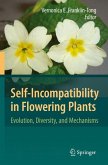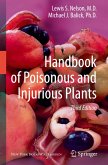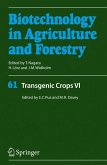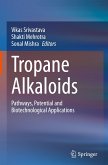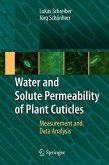This comprehensive and interdisciplinary handbook provides a bird's-eye view of two centuries of research on secondary metabolites of the two large Solanales families, Solanaceae and Convolvulaceae. In this book they're arranged according to their biosynthetic principles, while the occurrence and chemical structures of almost all known individual secondary metabolites are covered, which are found in hundreds of wild as well as cultivated solanaceous and convolvulaceous species.
1. 1 Philosophy and Aims of this Book 1. 1. 1 The Large Solanales Families as a Topic Solanales are from the Mid-Cretaceous (stem node age: 106 my; crown node age: 100 my) (Bremer et al. 2004). Solanaceae and Convolvulaceae are sisters represe- ing the two large families of this order. Their last common ancestor lived about 70 my ago (Durbin et al. 2000). The main objective of the author is to focus on aspects of our extensive knowledge of secondary metabolites in the plant kingdom in order to account for the specific competitiveness and productivity of these two large Solanales families. To this end, it has been necessary to take a bird's-eye view of 200 years of phytochemical research on the Solanales, since first scientific reports with regard to both families were published in the early nineteenth century. Due to an almost complete lack of phytochemical reports (one single exception) on species of the three remaining, very small families of the order (see Chap. 2), they have not been considered. 1. 1. 2 General Role of the Secondary Metabolism for a Specific Characterization and Classification of Plant Taxa While traditional systematics generally focused on morphologic-anatomical char- ters of plants, in some cases chemotaxonomic aspects with regard to low molecular secondary metabolites were also considered. However, plant biochemistry and chemotaxonomy normally played a minor role in classification.
1. 1 Philosophy and Aims of this Book 1. 1. 1 The Large Solanales Families as a Topic Solanales are from the Mid-Cretaceous (stem node age: 106 my; crown node age: 100 my) (Bremer et al. 2004). Solanaceae and Convolvulaceae are sisters represe- ing the two large families of this order. Their last common ancestor lived about 70 my ago (Durbin et al. 2000). The main objective of the author is to focus on aspects of our extensive knowledge of secondary metabolites in the plant kingdom in order to account for the specific competitiveness and productivity of these two large Solanales families. To this end, it has been necessary to take a bird's-eye view of 200 years of phytochemical research on the Solanales, since first scientific reports with regard to both families were published in the early nineteenth century. Due to an almost complete lack of phytochemical reports (one single exception) on species of the three remaining, very small families of the order (see Chap. 2), they have not been considered. 1. 1. 2 General Role of the Secondary Metabolism for a Specific Characterization and Classification of Plant Taxa While traditional systematics generally focused on morphologic-anatomical char- ters of plants, in some cases chemotaxonomic aspects with regard to low molecular secondary metabolites were also considered. However, plant biochemistry and chemotaxonomy normally played a minor role in classification.
From the reviews:
"The text covers the known chemistry of two large families and compares the findings in a variety of ways to provide a synthesis ... . At the end is an Appendix of colour plates, Subject Index, and Taxonomic Index. ... I recommend this book to anyone involved with people, whether city-dwellers or traditional. While the book contains plants not often used by humans, these families have species that are ubiquitous as food and medicine." (Daniel F. Austin, Economic Botany, Vol. 62 (4), 2008)
"This handbook ... survey of two centuries of research on secondary metabolites in the Solanaceae and Convolvulaceae families, both of the order Solanales. The author has more than 20 years of research experience on secondary metabolites of these taxa. ... the author treads a new path using more recent chemotaxonomic and molecular phylogenetic aspects for the characterization of plants. ... this book will clearly serve as a reference for scientists active in the field of medical plant research, natural products chemistry and pharmaceutical sciences." (Ivo Pischel, Journal of Ethnopharmacology, March, 2009)
"The handbook Solanaceae and Convolvulaceae secondary metabolites comprises 8 chapters and an appendix with 83 color plates of Solanales species. ... Most of the references listed at the end of each Chapter provide additional sources for the reader. This book is recommended to anyone interested in studying secondary metabolites." (Edna Myiake Kato, Brazilian Journal of Pharmaceutical Sciences, 2010)
"The text covers the known chemistry of two large families and compares the findings in a variety of ways to provide a synthesis ... . At the end is an Appendix of colour plates, Subject Index, and Taxonomic Index. ... I recommend this book to anyone involved with people, whether city-dwellers or traditional. While the book contains plants not often used by humans, these families have species that are ubiquitous as food and medicine." (Daniel F. Austin, Economic Botany, Vol. 62 (4), 2008)
"This handbook ... survey of two centuries of research on secondary metabolites in the Solanaceae and Convolvulaceae families, both of the order Solanales. The author has more than 20 years of research experience on secondary metabolites of these taxa. ... the author treads a new path using more recent chemotaxonomic and molecular phylogenetic aspects for the characterization of plants. ... this book will clearly serve as a reference for scientists active in the field of medical plant research, natural products chemistry and pharmaceutical sciences." (Ivo Pischel, Journal of Ethnopharmacology, March, 2009)
"The handbook Solanaceae and Convolvulaceae secondary metabolites comprises 8 chapters and an appendix with 83 color plates of Solanales species. ... Most of the references listed at the end of each Chapter provide additional sources for the reader. This book is recommended to anyone interested in studying secondary metabolites." (Edna Myiake Kato, Brazilian Journal of Pharmaceutical Sciences, 2010)



